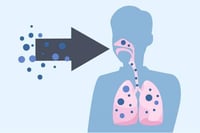Blastomycosis
What is it?
Blastomycosis is an infection from a fungus. It lives in moist soil or dirt. The fungus is found mostly in the Midwest part of the United States.
How do you get it?
Your child can get it from breathing in air with a fungus in it. Fungus can get stuck in the lungs. It sometimes moves into the blood. Once in the blood it can then move to the skin, bones, or brain.
What happens if you get the infection?
It is different for everyone. Some children have no symptoms. Some patients have only lung symptoms. Some have symptoms in other parts of the body. Your child can have:
- cough
- fever
- chest pain
- body aches
- lumps under the skin (nodules)
- poorly healing sores (ulcers)
- bone pain
- limp when walking
How is it diagnosed?
- Your child will need urine and blood tests.
- Your provider can also test your child’s sputum (mucus from deep in the lung).
- Older children and adults can often give mucus by coughing deeply and spitting it into a cup.
- Younger children may need a procedure to get the sputum. It is called a bronchoalveolar lavage. This is where a provider puts a tube into the child’s lung to get the mucus. If your child needs this, it will be explained to you.
How is it treated?
Anti-fungal medicines treat this disease. Your child will take them for 6 to 12 months. Your child may need to get an IV to get the medicine into their veins if they are in the hospital. Once you are home, your child will take a medicine by mouth. Your provider will talk with you about the best way to give your child their medicine. This will be talked about at one of your first visits with the infectious diseases provider.
What follow-up is needed?
Your child will need regular blood work to check the levels of the medicine and make sure your child’s body can handle it. It is very important to get these tests done to make sure your child is getting the right dose of the medicine to help your child heal.



